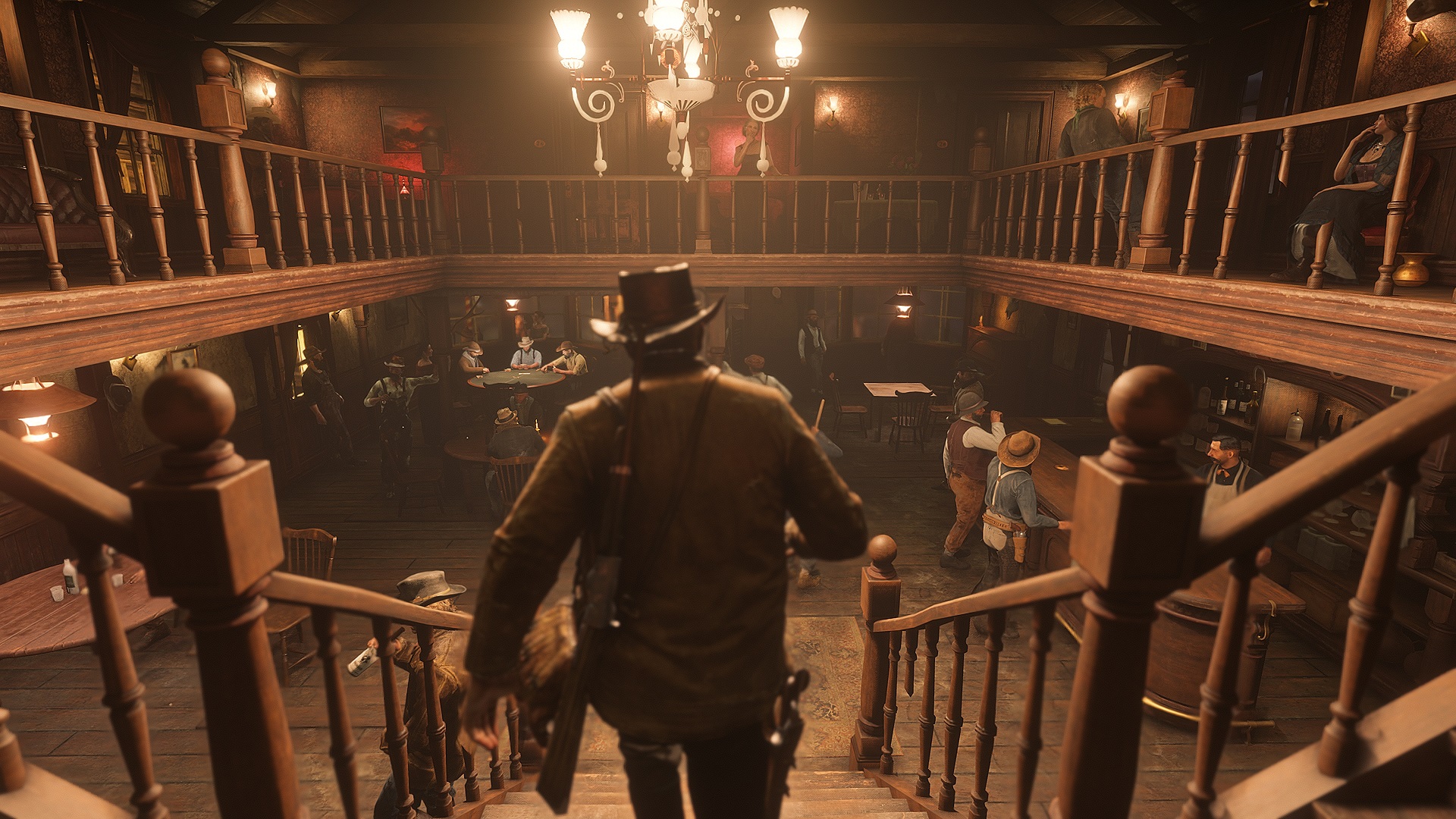Red Dead Redemption II Has the Best Video Game Camera of All Time

Mateo Rispoli ’21// Emertainment Monthly Staff Writer
In my opening moments with Red Dead Redemption 2, a few things became abundantly clear to me: this is a game that was made by artists completely enamored with their source material and unbound by the limitations of a wallet. There is a reverence with which the American Frontier on the brink of certain civilization is rendered every bit as endearing as it is obsessive. The main quest line is filled with meticulously written dialogue, and scenes that will surely work their way into the video game canon. What’s most impressive about it isn’t what happens in the story, but how important everything that’s outside of it feels. After a couple of hours, a particularly harrowing horse rescue mission, and 14 percent of the main storyline, I found myself asking how- how did they wrangle all of these disparate missions, activities, and everything between and turn it into something so cohesive and whole? The answer lies not in what is seen, but in what dictates what is seen. With Red Dead Redemption 2, Rockstar Games met the formidable video game cameras in the town square, drew from the hip, and hit between the eyes, gun smoking.
The concept of a cinematic camera in video games is nothing new, just undesirable. Rockstar has been doing it for years in fact, starting with their first true 3D open world, 2001’s Grand Theft Auto III on the PlayStation 2. The camera would shift from different 2nd person views of the car, still affixed to the vehicle itself. This same camera was employed the following year in Vice City, however in its 2004 follow up, San Andreas, Rockstar started to experiment with something more similar to their current system. Instead of being tied to the car, the camera is now completely independent, with aerial and street views being the most important additions. By the time Grand Theft Auto IV decided to blow minds worldwide, players had a cinematic camera that was truly beginning to enter filmic territory. The additions in 2013’s Grand Theft Auto V, which included new angles, panoramas, pans, and more, made it almost possible to recreate the much-lauded chase scene from Bullitt. Almost.

Each iteration of the cinematic camera was an improvement of itself, however they were still anything but practical. The shifting positions in tandem with the metropolitan panic on screen made for a woefully, and often hilariously, disorienting way to drive. Buildings would sometimes obscure the streets, and it just never translated properly to high speed pursuits that require precise and decided input. Red Dead Redemption 2 ameliorates all of these issues, bolstering its setting and slower pace as a way to improve player control while using the cinematic camera, for the first time creating a game that I would argue is a better experience with it on.
The first fix comes with driving: instead of forcing the player to precariously balance their horse on the majority single lane dirt roads, all of the work is done by holding (or pressing in time with the horse’s gallop) X or A and letting the horse follow the path on-rails. As the black bars encroach on the margins of the screen, the player is treated with views straight out of Butch Cassidy and The Sundance Kid. Arthur rides his horse as the sun rolls down the hills behind him and the camera trolleys through the unforgiving bush as a rabbit peeks his blurry head into the foreground and a flock of birds soar through the background. It’s downright filmic, and the first time I used it, I thought I had activated a cutscene. Travel can take upwards of 5-10 minutes between camp and missions in the former chapters, and this is an infinitely more streamlined and enjoyable way to make those journeys. Opting for the cinematic angle takes out some of the monotony, and instead aggrandizes these otherwise boring treks across desert.

This is particularly useful in a mission setting, in which Rockstar’s signature travel dialogue flourishes. Instead of steering, you can simply sit back and enjoy the banter of two outlaws flimsily justifying whatever reprehensible crime they’re on their way to commit. To top it off, a simple click of the focus/aim button takes you right back into the thick of the action, were situations to arise as they often do.
If the camera choices in Red Dead Redemption 2 tell me anything, it’s that Rockstar is unabashedly proud of the world they labored upon for over half a decade. While many games use cameras to thinly veil the visually lesser desirable aspects of their games, Red Dead uses it to show off like a lone gun rearing his horse 10 feet above the dust.